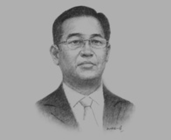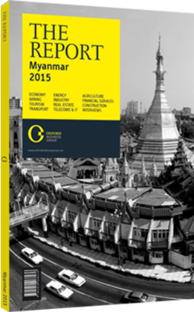U Zay Yar Aung, Minister of Energy: Interview

Interview: U Zay Yar Aung
How has the global oil and gas community reacted to the opening of Myanmar’s oil fields?
U ZAY YAR AUNG: The global oil and gas community, especially companies from the EU and the US, have expressed increased interest in Myanmar’s energy sector since political and economic reforms led to the lifting of international sanctions. In 2011 we began an international bidding process on 18 onshore blocks, eight of which were ultimately awarded to six international oil companies. Two years later a second round was conducted, also for 18 onshore blocks, with 16 blocks awarded. The necessary production sharing contracts are currently being prepared for signing. The year 2013 also saw 30 offshore blocks go up for bidding. The 13 candidates who won 20 of said blocks are currently negotiating contracts, with the Ministry of Energy (MoE) seeking to implement these agreements in 2014.
Meanwhile, we are cooperating with the World Bank, the International Finance Corporation and technical associations from the EU and the US. We are also participating in the 2010-15 ASEAN Plan of Action for Energy Cooperation, which will ensure a reliable regional energy supply through collaboration on the ASEAN Power Grid and the Trans-ASEAN Gas Pipeline. The plan also focuses on energy efficiency, conservation, and promoting cleaner coal and renewable energy.
Where should investment be prioritised to achieve the oil and gas industry’s full potential?
AUNG: Energy is a key factor for growth and a fundamental requirement for development in any country; however, only one quarter of Myanmar’s population currently has access to electricity. The MoE is also unable to meet the country’s oil and gas needs, all while exporting a large volume of gas because of previous contractual agreements. To address this the MoE has prioritised investment in the upstream sector, particularly with respect to oil and gas exploration. Foreign investors cooperating with local partners should therefore focus on the exploration of new onshore and offshore blocks. Meanwhile, the downstream sector will remain a secondary priority and development will largely depend on new oil and gas reserves.
What is the production outlook for the industry?
AUNG: The MoE is working to meet the country’s energy needs and boost production through cooperation with international firms on the exploration and exploitation of new blocks. We are inviting petroleum production and distribution actors to enter the market with a local joint venture partner. To increase production over the next 18 months, we are encouraging significant investment in the sector. International expertise in both upstream and downstream activities can also help to bring technical know-how to the industry.
Adhering to recent environmental and social impact assessments and meeting contractual operations procedures are both priorities in the sector. We also must ensure that the joint venture process for petroleum production and distribution works effectively and benefits both parties. We are likewise keen to apply the industry best practises offered by bidders interested in investing in onshore and offshore fields.
What are the major challenges for potential energy sector entrants, and how can they mitigate risk?
AUNG: In the past, energy investments were governed by production-sharing and intellectual property rights agreements that were made directly between the investor and the authorities. However, the MoE’s energy reform has created a paradigm shift. The international upstream bidding and downstream joint venture process is now much more transparent.
The primary challenges for investors include a lack of skilled workers; technical, social, environmental and legal issues; and poor infrastructure. However, these can also be seen as opportunities. New sector participants can mitigate the above risks by investing in human resource programmes and by facilitating the development of appropriate infrastructure initiatives.
You have reached the limit of premium articles you can view for free.
Choose from the options below to purchase print or digital editions of our Reports. You can also purchase a website subscription giving you unlimited access to all of our Reports online for 12 months.
If you have already purchased this Report or have a website subscription, please login to continue.

